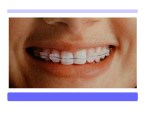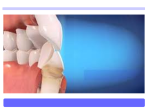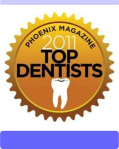

A Guide to Thinking About Getting Braces – The Top Frequently Asked Questions (FAQ’s).
1) Can you be too old for braces? [1]
 There is no age limit for braces. As long as you have good periodontal health, braces can be used to straighten your teeth and correct your bite. More people over age 30 are getting braces today than ever before. Many readers are between the ages of 25 to 55! However, if you have been on a Bisphosphonate drug for osteoporosis (such as Fosamax or Boniva) you need to talk to Dr. Brigham at Brigham Orthodontics first. Be sure and mention this during your FREE consultation!
There is no age limit for braces. As long as you have good periodontal health, braces can be used to straighten your teeth and correct your bite. More people over age 30 are getting braces today than ever before. Many readers are between the ages of 25 to 55! However, if you have been on a Bisphosphonate drug for osteoporosis (such as Fosamax or Boniva) you need to talk to Dr. Brigham at Brigham Orthodontics first. Be sure and mention this during your FREE consultation!
2) I wore my retainer for a while when I was younger, but then I stopped wearing it and my teeth shifted years later. Is this common?
Yes, it is more common than you think. The teeth are actually more dynamic than you’d expect. Sometimes, when wisdom teeth erupt, your bite can change in adulthood. A large percentage of adults in braces are in them for a second time!
3) My kids just got braces and now I’m thinking of getting them, too. 
Many adults “finally get their teeth done” when their kids go in for orthodontic treatment. It’s more common than you think! Some patients have an entire family in braces!
4) What is it like to have braces put on your teeth? Does it hurt?
Getting braces put on your teeth does not hurt, and does not require Novocain injections or anything painful.
5) How much do braces cost?
The cost varies depending on what needs to be done and how long it may take to straighten your teeth. The metropolitan Phoenix area providers tend to be pretty similar in pricing. One benefit of the FREE consultation at Brigham Orthodontics is to determine exactly which system is best for you and how much time it may take, which in turn determines the cost.
6) Does dental insurance cover the cost of braces?
Many people in the U.S. have dental insurance through their employers or as individuals/families. This insurance usually covers orthodontic treatment for children up to age 18, but does not cover adult orthodontics — or only covers it up to a certain dollar amount. If your plan covers adult braces, consider yourself in the lucky person
Remember, most insurance plans and discount dental plans do not cover treatment that is already in progress. So, if you are going to sign up for a dental plan or insurance plan, do it before any treatment begins. Also, beware of any waiting periods your dental plan may enforce. And by the way, jaw surgery or extraction is sometimes covered under your medical plan, so be sure to look into this, too.
If you do not have insurance, Brigham Orthodontics offers several third-party financing plans to make the process affordable for you and your family.
7) Can I get the invisible braces (Invisalign brand) instead of traditional ones?
That depends on your specific case. Invisalign braces are usually not recommended for very complicated cases, or cases that involve extractions. During the FREE consultation, Brigham Orthodontics can decide whether Invisalign is the right recommendation for you.

View FREE video, “What to expect with Invisalign aligners”, click here >> http://goo.gl/5d83c .
8) What is the difference between a dentist and a orthodontist?
A orthodontist is a dentist who has taken several years of extra training beyond the basic dental degree. Here is what the American Association of Orthodontists (AAO) says:
“It takes many years to become a orthodontist. As in medicine, the educational requirements are demanding.
First, a orthodontist must complete college.
Next is a three to four-year graduate program at a dental school in a university or other institution accredited by the American Dental Association (ADA).
Finally, there are at least two or three years of advanced specialty education in an ADA-accredited orthodontic residency program. The program is difficult. It includes advanced knowledge in biomedical, behavioral and basic sciences. The orthodontic resident learns the complex skills required to both manage tooth movement (orthodontics) and guide facial development (dentofacial orthopedics).
Only dentists who have successfully completed this advanced specialty education may call themselves orthodontists.”

View Dr Brigham’s education and back ground, click here >> http://goo.gl/moXbo .
View The Phoenix Magazine TOP DENTIST ranking for Dr Brigham, click here >> http://goo.gl/ZbYUy .
9) Should I get braces done by a dentist or by an orthodontist?
It’s normally recommended if you have a orthodontist in your area to select a qualified orthodontist such as Brigham Orthodontics.
Just because a dentist says he or she “can do braces for you” doesn’t mean that they have all the training necessary to successfully handle complicated treatments. Normal and complicated cases are probably best handled by an orthodontist who has more training.
If you’re considering getting braces, you should probably get at least one opinion from a fully credited orthodontist to ensure that you are getting the correct type of treatment.
10) How much does an orthodontic consultations cost?
At Brigham Orthodontics we look at the alignment of your teeth and your facial aesthetics and gives you a general opinion of what he or she would do to correct your problems.
The consultation at Brigham Orthodontics is FREE. Keep in mind after your initial consultation, and you have selected Dr Brigham to complete your new smile, he will put together a comprehensive treatment plan for you after obtaining teeth molds and panoramic x-rays.
11) What is a “bite” and what is malocclusion?
Occlusion is another word for your bite — how the teeth in your top and bottom jaw meet with each other. Mal comes from the Latin root meaning “bad.” So, a malocclusion means a bad bite — a bite with problems. It means that your top teeth do not line up properly with your bottom teeth.
12) What are the “types of bite” and what do they mean?
The most common types of bite problems are:
- Overbite. Patients with overbites appear “bucktoothed” and have a receding chin. The lower front teeth are positioned too far behind the upper front teeth. This condition can result from a horizontal overdevelopment of the upper jaw or an underdevelopment of the lower jaw or a combination of both.
- Underbite. Patients with underbites have a strong jaw with a chin that juts straight out. The lower front teeth are positioned in front of the upper front teeth. This condition is caused by the horizontal underdevelopment of the upper jaw, the horizontal overdevelopment of the lower jaw, or most frequently a combination of both.
- Crossbite. This occurs when the upper teeth are biting inside the lower teeth. This is frequently the result of a narrow upper jaw. Crossbites also occur because of a mismatch in jaw size and position between the upper and lower jaw. Some crossbites also lead to asymmetry of the lower jaw by causing the jaw to be abnormally deflected to one side when closing the teeth together. Proper diagnosis determines how and when a crossbite needs correction.
- Open bite. This occurs when the upper front teeth cannot meet or overlap the lower front teeth even though the back teeth have closed together. Sometimes this makes eating difficult. Open bites are caused by the overdevelopment of the back portion of the upper jaw in a vertical direction. As the back portion of the upper jaw grows vertically downward, the lower jaw will open in a clockwise direction. This explains why open bite patients have a long facial appearance.

Take the FREE Invisalign Smile Assessment, click here >> http://goo.gl/oRXo8 .
13) Can I get braces just on the top or bottom?
That depends on your case. Orthodontics isn’t just about making your teeth straight or making them look better. Most orthodontists take a lot of things into consideration when recommending treatment, such as:
- How the top and bottom teeth meet with each other (i.e., your bite)
- How well you can chew your food
- Whether you have a tongue thrust problem
- Whether extraction or surgery will be necessary to correct your problems
So you see, it isn’t just a matter of making your teeth look pretty. There is a lot of other factors to take into consideration. This is why you sometimes need a full set of braces, even if you think that you only need them on top or bottom.
14) When will I begin to see changes in my teeth after the braces are put on?
Some people begin see changes in their teeth in the first 4 to 8 weeks of treatment.
15) Are people going to think I look geeky or weird with braces on my teeth?
Of course you’re self-conscious because it is YOUR mouth, but frankly most people don’t give a hoot. Your braces are a conversation piece for about 3 minutes; after that, nobody pays much attention. Really. And most people don’t think you look geeky. In fact, they probably think you look cute, or applaud that you are doing something positive to improve your appearance and your dental health. Whenever you become self-conscious about your braces, think about how great you’ll look after they come off!
16) Should I get teeth extracted as part of my orthodontic treatment?
It depends on your specific case. When we are young and our jaws are still growing, orthodontists can work with our growth to straighten the teeth without extraction.
But once we are adults, orthodontists are limited to what is already in place. Your teeth and jaw help to shape your face. Changing the underlying structure will result in some changes in your facial appearance. You should discuss this with your orthodontist. There are newer types of bracket systems that apply lighter forces and may be able to correct your problems without extractions, such as Damon Brackets. Be sure to ask about this during your FREE consultation!
17) How long does it take to close gaps between teeth after an extraction?
That depends on your body’s unique physiology. Gaps in teeth on the lower jaw tend to close slower than on the upper jaw. It can take anywhere from a few months to a year to close extraction gaps.
18) Do you have to change your diet when you wear braces?
Yes, you should consider this to some extent. At first your teeth may hurt a bit and you might not be able to bite into hard foods, big sandwiches, or anything too chewy or crunchy. It is best to stick to soft foods until your teeth begin to feel better — usually in a few weeks. It’s worth it though, your new smile and confidence will be amazing!
Sources:
[1] (edited) ArchWired.com article http://www.archwired.com/FAQ-Thinking_About_Getting_Braces.htm .


View Brigham Orthodontics “5 Easy Steps to Straight Teeth”, click here >> http://goo.gl/5Rbb7.

For your convenience, Dr. Brigham provides quality care at office locations in Scottsdale and Cave Creek areas. Call 480-767-8810.

Dr Brigham’s professional team.

Dr Brigham and his team is ranked as a PHOENIX Magazine ‘TOP DENTIST’, click here for more information on Brigham Orthodontics >>http://goo.gl/ZbYUy.

Brigham Orthodontics office locations and hours, click here >> http://goo.gl/qEmWe .

View our ’4- EASY Steps’ NEW PATIENT page with all the information you need to get started, click here >> http://goo.gl/mdMnV .
Call Dr Brigham to set a FREE consultation at 480-767-8810.

Share this blog article with friends and family by clicking on the social network or email button below.
![]()
 beliefs in its limited impact on oral environments. As the profession has grown increasingly more aware of the potential impact that oral health has on an individual’s overall health and quality of life, treatment plans have increasingly addressed such issues as the impact of maxillary arch form on nasopharyngeal airway capacity and the connection between periodontal health, cardiovascular health and general well-being. Dr Gary Brigham, DDS, MSD, has focused on incorporating this information into the treatment he is providing for his patients, who range in age from 3 to 70 and older. In doing so, he is an active participant in the changing face of orthodontics as it addresses the new realities of the 21st century orthodontic practice.
beliefs in its limited impact on oral environments. As the profession has grown increasingly more aware of the potential impact that oral health has on an individual’s overall health and quality of life, treatment plans have increasingly addressed such issues as the impact of maxillary arch form on nasopharyngeal airway capacity and the connection between periodontal health, cardiovascular health and general well-being. Dr Gary Brigham, DDS, MSD, has focused on incorporating this information into the treatment he is providing for his patients, who range in age from 3 to 70 and older. In doing so, he is an active participant in the changing face of orthodontics as it addresses the new realities of the 21st century orthodontic practice. degree in Immunology at Case Western Reserve University in Cleveland, OH. For his research, he was awarded the Harry Sicher Award from the American Association of Orthodontics. In addition, he completed a Postdoctoral Fellowship in Craniofacial Anomalies at the Center for Craniofacial Anomalies in Chicago, IL, where he serviced as an Assistant professor of Pediatric Medicine at the Abraham Lincoln School of Medicine at the University of Illinois Medical Center. He completed one year of a PhD. program in biological chemistry and nutrition at the University of Illinois in Chicago that was interrupted when the U. S. government sent him to Tokyo, Japan. Upon his return, he became certified by the Foundation for Advanced Continuing Education for postgraduate study in comprehensive clinical orthodontics.
degree in Immunology at Case Western Reserve University in Cleveland, OH. For his research, he was awarded the Harry Sicher Award from the American Association of Orthodontics. In addition, he completed a Postdoctoral Fellowship in Craniofacial Anomalies at the Center for Craniofacial Anomalies in Chicago, IL, where he serviced as an Assistant professor of Pediatric Medicine at the Abraham Lincoln School of Medicine at the University of Illinois Medical Center. He completed one year of a PhD. program in biological chemistry and nutrition at the University of Illinois in Chicago that was interrupted when the U. S. government sent him to Tokyo, Japan. Upon his return, he became certified by the Foundation for Advanced Continuing Education for postgraduate study in comprehensive clinical orthodontics.![]()
![]()

![]()






















































